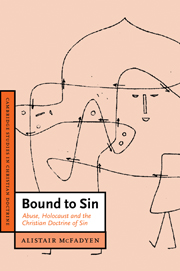5 - What was the problem? ‘The Final Solution’ and the binding of reason
Published online by Cambridge University Press: 02 December 2009
Summary
Rational racism
Ideas first?
Between the ‘euthanasia’ programme directed against the mentally handicapped in 1939 and the ending of the war in 1945, the Nazi state had organised the systematic murder of approximately eleven million people, among them six million Jews. How could such a monstrous act be contemplated, much less implemented? There seems to be no single, comprehensively satisfactory answer to that question. But the most convincing approach begins by bringing the two halves of the question – contemplation and implementation – together and resisting the notion that ideas are primary, always preceding action. For there appears to have been a much more complex interplay between ideas and action than that. The idea of genocide against the Jews and other ‘degenerate’ races, groups and individuals was not a fully formulated action-guiding principle, a programmatic intention of Hitler's, from the start. The idea itself took shape in the context of concrete, social, political and material processes of action and interaction; in other words, it appears that, in the development of a policy of genocide, practice drove the incremental development of ideas as much as the other way about.
Genocide as a policy was arrived at only gradually, as previous policies proved to be inadequate to ‘the Jewish problem’. The pre-war encouragement of Jews to emigrate to Palestine, to other European nations or to the USA were unlikely ever to represent a total solution, given the reluctance of other nations to receive them or to permit their movement in appropriate numbers.
- Type
- Chapter
- Information
- Bound to SinAbuse, Holocaust and the Christian Doctrine of Sin, pp. 80 - 104Publisher: Cambridge University PressPrint publication year: 2000

